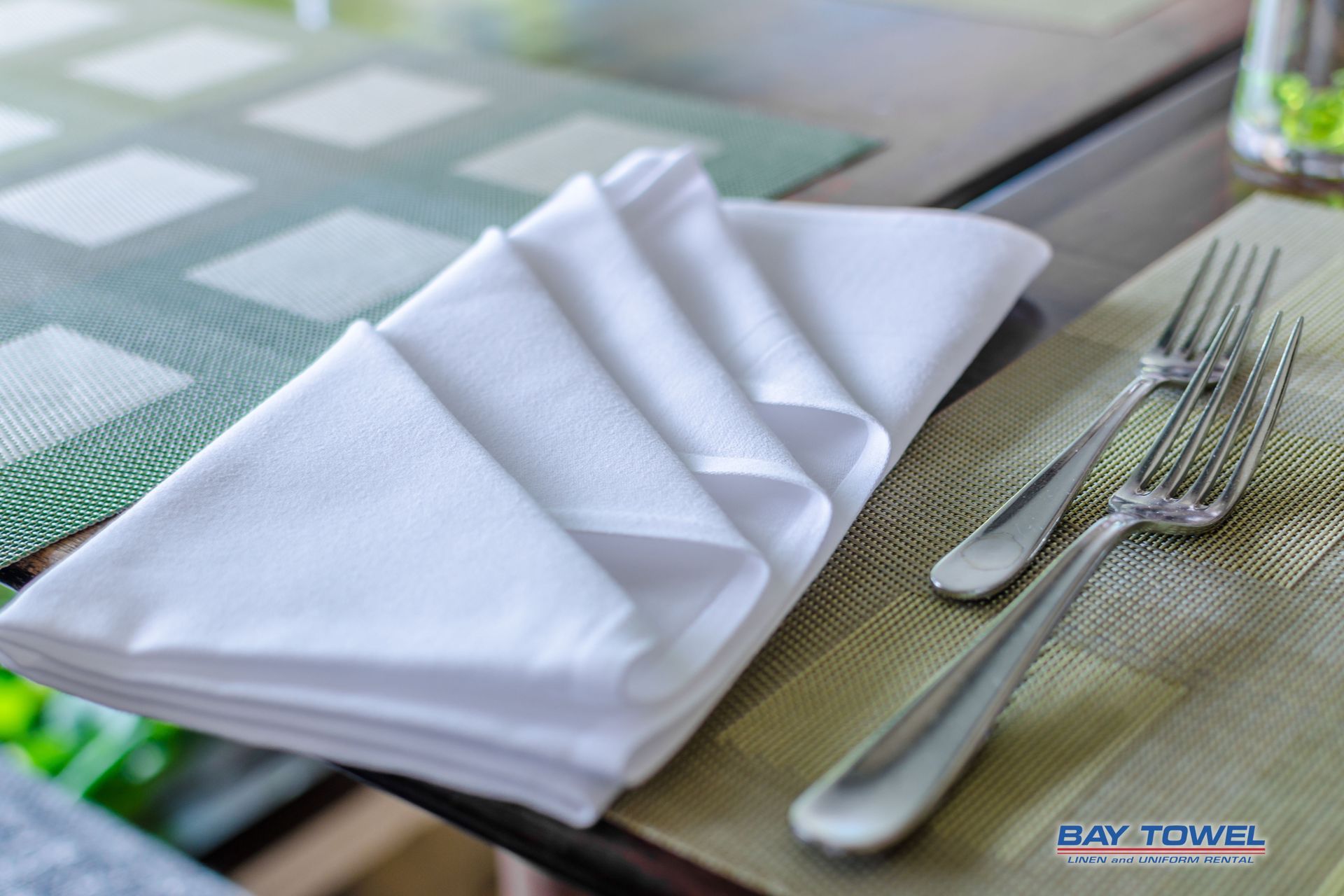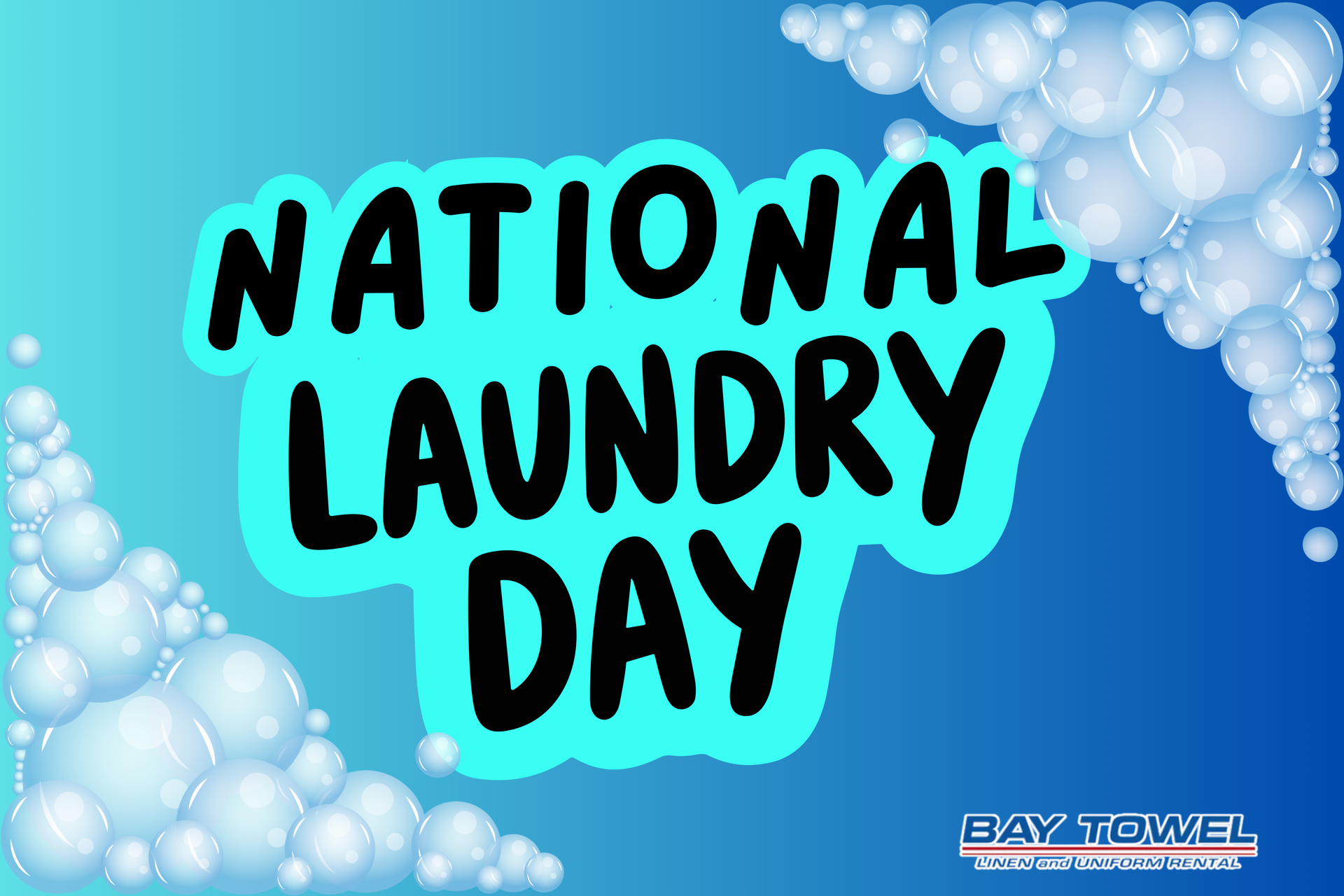Understanding Color Inconsistencies in Napkins: The Three Phases of Napkins in the Laundry Industry

Napkins go through three distinct phases: Brand New, The Sweet Spot, and Phasing Out.
In industries such as hospitality, restaurants, and event planning, linens—particularly napkins—are a key element of customer service and presentation. While a fresh stack of crisp, pristine napkins might seem like a simple part of the operation, behind the scenes, there are a variety of factors that contribute to their appearance and longevity. One such factor is the color inconsistency that napkins experience as they go through the laundry process over time. Understanding these stages can help businesses manage expectations, reduce waste, and maintain an optimal level of quality in their linens.
1. Brand New: Crisp, Bright, and Unblemished
When napkins are brand new, they arrive in their perfect form—sharp, vibrant, and spotless. The colors are rich and the fabric feels fresh. In the early stages, napkins appear exactly as intended by the manufacturer, whether it’s a clean white, a deep navy, or a rich burgundy.
However, the brand-new phase is relatively short-lived in the context of an industrial laundry. Over time, even the most carefully cared-for napkins will begin to experience some changes. These initial stages are marked by:
Intense Freshness: The napkins have a clean, crisp look with little to no imperfections. The colors are at their most vibrant, and they haven’t yet been subjected to the stress of regular washing.
Resilience: During this phase, napkins maintain their shape and color after the first few washes, making them ideal for use in fine dining or premium establishments where presentation is key.
Wrinkle-Free Appearance: New napkins often come with little to no wrinkles, which helps restaurants maintain a polished and professional look.
2. The Sweet Spot: Balanced and Softened with Light Wear
As napkins go through the laundry cycle several times, they enter what could be called the “sweet spot” phase. This is when they are soft, comfortable, and still presentable but have undergone enough laundering that their colors may begin to show subtle changes.
In this phase, napkins still maintain the bulk of their original vibrancy, but they start to lose some of the crispness and sharpness of their brand-new appearance. Here’s what happens during this phase:
Slight Fading: The vibrant color may soften just slightly after multiple washes, especially if the napkins are heavily used. A dark blue may start to take on a more muted shade, or a white napkin might develop a slight yellowish hue due to detergent residue or environmental factors.
Softness and Comfort: Fabrics begin to soften with use, making the napkins feel more pleasant to the touch. Soft napkins are easier to fold and display, which is an ideal feature for restaurants and catering events.
Longevity in Appearance: Napkins in the sweet spot remain reliable in terms of both function and form. They can still handle heavy use without showing too much wear, which is why this phase is often the most desirable for daily operations.
Consistent Performance: At this stage, napkins are still highly absorbent and resistant to wrinkles, which makes them ideal for use in high-turnover environments like restaurants or hotels.
3. Phasing Out: Fading Colors and Wear-Related Damage
Eventually, even the most durable napkins will reach the end of their useful life, marked by a noticeable decline in color and overall quality. This is the “phasing out” phase, and it’s often the most frustrating for those managing the linen inventory. Here’s what typically happens in this phase:
Color Inconsistencies: The biggest sign of the phasing-out stage is the onset of noticeable color inconsistencies. Napkins that were once a deep, vibrant shade may now have patches of lighter or more faded color, especially along the edges or where they’ve been folded and exposed to wear. These color inconsistencies occur as a result of detergent residue, UV exposure, and the repeated stresses of industrial washing.
Stains and Discoloration: Over time, even the most diligent laundering process can lead to stains that don’t fully come out, as well as areas where the fabric has become slightly yellowed or discolored. This is particularly true in white napkins or lighter shades.
Fabric Breakdown: As napkins are repeatedly washed, the fibers start to break down, leading to fraying edges, thinning fabric, and reduced durability. These signs of wear become more evident, especially in high-traffic environments.
Unacceptable Presentation: While napkins in the sweet spot phase can still deliver a polished look, napkins in the phasing-out phase may start to look unkempt or less professional. They may be marked with faded, uneven colors or stains that aren’t easy to remove, diminishing the overall guest experience.
Managing Color Inconsistencies in Your Linen Supply
To avoid embarrassment or unnecessary costs, businesses should plan for the eventual phasing out of linens, keeping track of their condition and replacing them when necessary. Here are a few strategies to manage color inconsistencies and maximize the lifespan of your napkins:
Rotate Linens: Keep track of which napkins are in better condition and rotate them to avoid overusing the older, faded ones. This helps to balance out the wear and tear across your entire stock.
Set Replacement Timelines: Implement a regular schedule for replacing linens based on their usage. Even if a napkin looks fine on the surface, it may be losing its durability and performance in ways that aren’t immediately visible.
Proper Washing Techniques: Ensure that your industrial laundry process is using the correct temperature, detergents, and washing cycles. Over-washing or using harsh chemicals can speed up the fading process, so maintaining an optimal cleaning routine will help preserve the napkins’ appearance for longer.
Choose High-Quality Fabrics: Invest in higher-quality napkins from the outset. While they may cost more upfront, their longevity can make them more cost-effective in the long run. Premium napkins are less likely to show severe inconsistencies and may last longer before phasing out.
Conclusion
The life cycle of napkins in the industry laundry is marked by three distinct phases: Brand New, The Sweet Spot, and Phasing Out. While brand new napkins provide that crisp, pristine look, it’s the sweet spot phase that delivers the most practical value. Understanding and managing the transition into the phasing-out stage can help businesses maintain a consistent and professional presentation while minimizing waste.
By closely monitoring the condition of napkins and making adjustments to washing routines and replacement schedules, businesses can ensure they always present their best—one perfectly folded napkin at a time.


